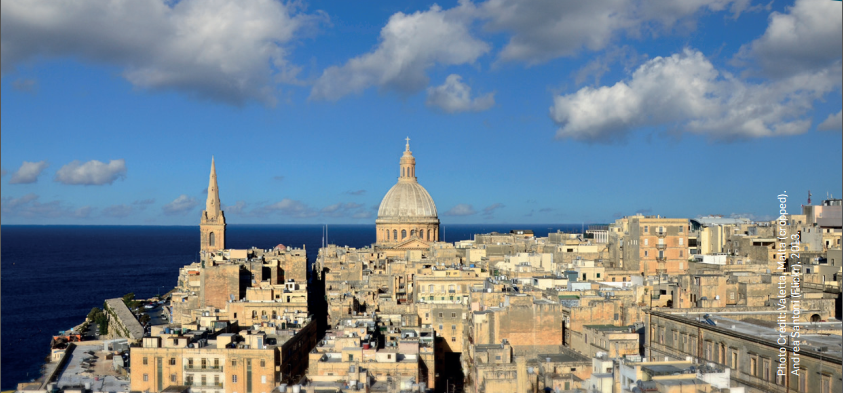| MoU signed between WHITRAP Shanghai and the South East of Malta |
| Author:Luo Xi PublishDate:2018-06-20 Hits:2425 |
On 20 June 2018, a Memorandum of Understanding (MoU) was signed between WHITRAP Shanghai and the South East Region (Kumitat Regjonali Xlokk) in Malta for the implementation of the UNESCO Historic Urban Landscape Recommendation. Since then, the South East Region of Malta becomes a new pilot case of the WHITRAP HUL Pilot Cities Programme.
The South East Region of Malta is one of the five Maltese regions, located on the main island and borders Malta Majistral, the North Western Region. It is composed of 15 local councils and includes the nation’s capital city of Valletta. The geographic area is 34.3 Km2 with 96,316 resident base population. (Regjun Xlokk, Malta – City Scan Report 2015)
Currently the South East Region is developing various management and governance mechanisms through the compilation of an Action Plan following UN Global Compact Cities Programme (please refer to http://www.regjunxlokk.org/action-plan.html), which is also highly geared at the HUL. The South East Region also joined the League of Historic Cities (please refer to http://www2.city.kyoto.lg.jp/somu/kokusai/lhcs/). The main objective to implement HUL at this moment and launch the South East Region as Pilot Case is to develop further the HUL application through diagnostic and sustainability tools in an integrated framework, which may rich the experience of HUL application, especially in a high-density site with a high concentration of World Heritage Site, like the South East Region.
 |
- Call for Application | 2024 Global Awards for World Heritage Education Innovative Cases(AWHEIC) Promoting what people do and how they do it
- Documentary: 2023 World Heritage Creative X Innovators Conference and the AWHEIC Third Anniversary Celebration
- Publication | WHITRAP Newsletter No. 61
- Mt. Huangshan first show in Climate Action for World Heritage
- Call for Good Practices: 2024 Environment and Resilience
- FAQs | 2024 Call for Good Practices
Copyright © 2009-2012 World Heritage Institute of Training and Research-Asia and Pacific (shanghai)


